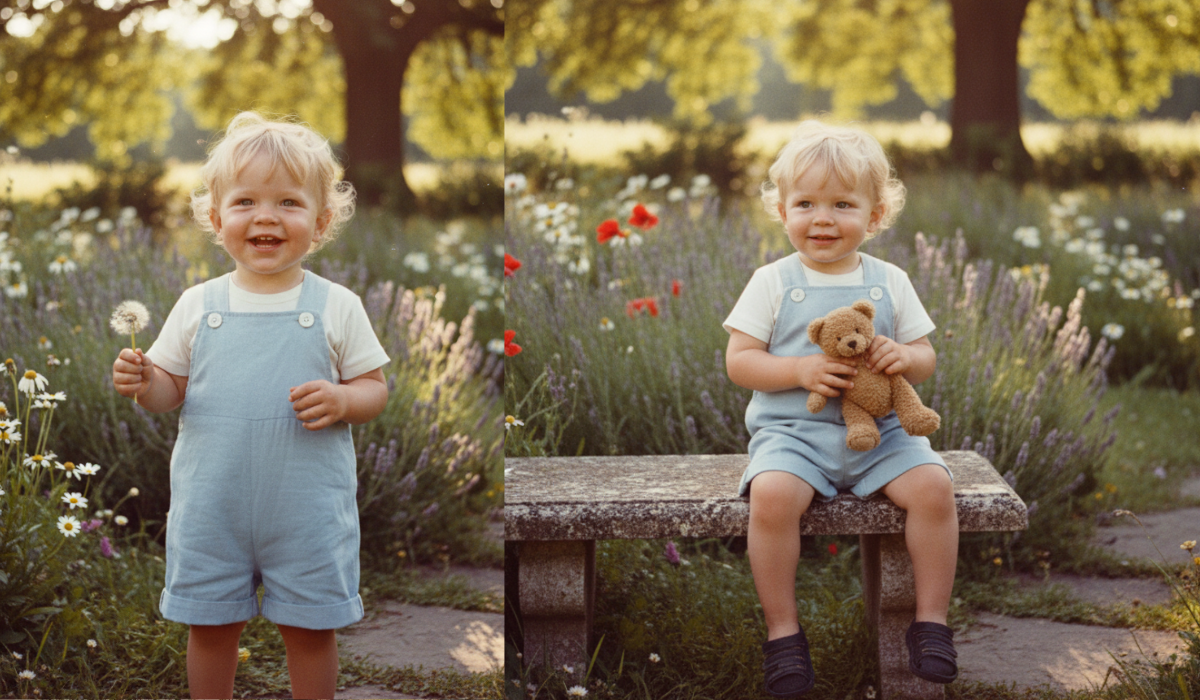When it comes to timeless children’s clothing, few garments have endured with as much charm and tradition as Jon Jon clothes. Known for their simplicity, comfort, and versatility, Jon Jons remain a staple in the wardrobes of young boys, particularly in the American South, but their popularity has expanded across many regions and cultures.
Unlike fleeting trends, Jon Jons carry with them a sense of heritage. They often appear in family photos, holiday gatherings, and milestone celebrations, becoming treasured keepsakes passed down through generations. This article explores the origins, design features, cultural importance, and modern adaptations of Jon Jon clothes—offering parents and caregivers a comprehensive understanding of why these garments remain so beloved.
What Are Jon Jon Clothes?
Jon Jon clothes, sometimes spelled “John John,” refer to a type of one-piece outfit traditionally designed for young boys, usually toddlers to preschool age. The garment is sleeveless, with a bib-like front and straps that button at the shoulders. It extends into short or long pants depending on the season.
Key features include:
- Button Straps: Functional buttons at the shoulders, making it easy to dress and undress a child.
- Simple Construction: Minimalist in design, often made with cotton or linen.
- Versatility: Can be worn alone in warm weather or layered with a shirt or turtleneck in cooler months.
- Classic Style: Clean lines and timeless cuts that rarely go out of fashion.
This simplicity is precisely why Jon Jons have remained popular for decades.
Historical Background
The history of Jon Jon clothes can be traced back to early 20th-century children’s fashion. At the time, practicality and ease of movement were essential in designing clothing for young children. One-piece garments were particularly useful since they reduced the risk of clothing becoming untucked or uncomfortable during play.
In the American South, Jon Jons became especially prominent. Many families adopted the style for its neat, formal appearance while still allowing children to remain comfortable. Photographs from the 1950s and 1960s often show boys in pastel Jon Jons, sometimes monogrammed with their initials, worn during Sunday services, Easter gatherings, or summer picnics.
Over time, Jon Jon clothes developed an association with tradition and southern heritage, though they have since spread far beyond regional boundaries.
Why Parents Choose Jon Jon Clothes
Parents continue to favor Jon Jon clothes for several reasons:
- Ease of Dressing – The shoulder-button design and roomy fit make them practical for squirmy toddlers.
- Timeless Appearance – Unlike trendy clothing that may feel outdated after a season, Jon Jons retain a classic look suitable for photographs and special occasions.
- Comfort – Soft fabrics and breathable materials help children move freely.
- Adaptability – They can be worn casually for play or dressed up with accessories for formal events.
- Heirloom Quality – Many Jon Jons are made with durability in mind, allowing them to be handed down to younger siblings or even the next generation.
Seasonal Variations
Jon Jon clothes are remarkably versatile, adjusting easily to seasonal needs:
- Summer Jon Jons: Made with lightweight cotton, often in pastel or bright colors. Usually short-legged for breathability.
- Winter Jon Jons: Crafted from corduroy, velvet, or heavier cotton blends. Often paired with turtlenecks or collared shirts underneath.
- Holiday Versions: Festive patterns, plaids, or embroidered motifs such as Christmas trees, Easter bunnies, or pumpkins for Halloween.
Cultural Significance
For many families, Jon Jon clothes represent more than just a clothing choice—they carry cultural symbolism. In southern U.S. traditions, dressing boys in Jon Jons before they transition into “big boy” clothing like trousers and polos is a rite of passage.
Additionally, Jon Jons are often associated with certain life events:
- First Birthday Celebrations – Personalized Jon Jons with embroidered names or numbers.
- Family Portraits – Coordinated Jon Jons in matching or complementary colors.
- Holidays – Classic outfits for Christmas morning or Easter egg hunts.
These associations have turned Jon Jons into treasured keepsakes, often stored away long after a child has outgrown them.
Materials and Fabric Choices
The comfort of Jon Jon clothes largely depends on fabric selection. Traditional options include:
- Cotton: The most popular, breathable, and easy to wash.
- Linen: Lightweight and ideal for summer but requires more care.
- Corduroy: Warm and sturdy, perfect for cooler weather.
- Velvet: Reserved for formal occasions and holidays.
Parents often prefer natural fabrics that are soft against sensitive skin and resilient enough to withstand frequent washing.
Embroidery and Personalization
One of the most distinctive features of Jon Jon clothes is the opportunity for personalization. Embroidery and appliqué designs add charm, individuality, and sentimental value.
Common embellishments include:
- Monograms or initials
- Seasonal motifs (pumpkins, snowflakes, bunnies)
- Animals or playful shapes (ducks, sailboats, elephants)
These small details make each Jon Jon unique while highlighting its heritage as a garment of tradition and memory.
Modern Adaptations
Though rooted in tradition, Jon Jon clothes have adapted to contemporary fashion. Today, designers experiment with:
- Gender-neutral colors beyond pastels.
- Sustainable fabrics like organic cotton.
- Updated cuts with slimmer fits or playful details.
- Global influence blending southern tradition with international fashion sensibilities.
This evolution has kept Jon Jons relevant in modern children’s fashion without losing their classic essence.
How to Care for Jon Jon Clothes
Maintaining Jon Jon clothes ensures their longevity, especially if they are intended to be passed down. Care tips include:
- Washing in cold water to preserve fabric colors.
- Air-drying when possible to prevent shrinking.
- Using gentle detergents for sensitive fabrics.
- Storing in garment bags for keepsakes.
Informational FAQs about Jon Jon Clothes
1. At what age do children typically wear Jon Jons?
Jon Jons are most commonly worn by boys between ages 1 and 4, though variations exist for infants and older children.
2. Are Jon Jons only for boys?
Traditionally, Jon Jons are designed for boys. However, modern adaptations sometimes include similar one-piece outfits for girls.
3. Can Jon Jons be worn for casual play?
Yes. While often seen in formal settings, many Jon Jons are made from durable fabrics that make them suitable for everyday wear.
4. What makes Jon Jons different from rompers?
Rompers typically have sleeves and are unisex, while Jon Jons are sleeveless with button straps and are traditionally designed for boys.
5. Why are Jon Jons popular in the southern United States?
Cultural tradition, combined with warm-weather suitability and classic aesthetics, has made Jon Jons especially beloved in the South.
6. Are Jon Jon clothes considered outdated?
Not at all. Their classic style has made them timeless, and modern designers continue to refresh the look with contemporary fabrics and colors.

